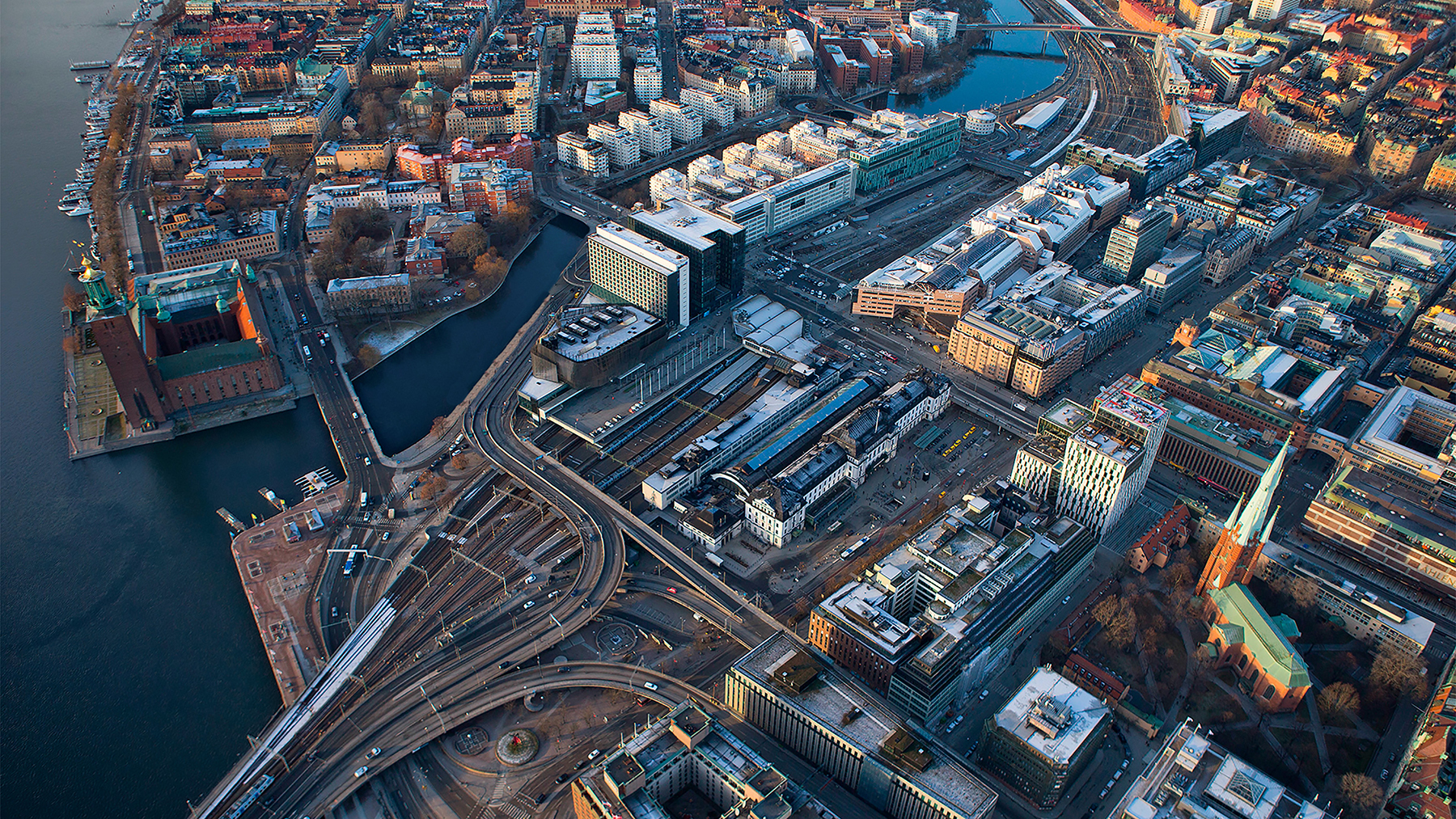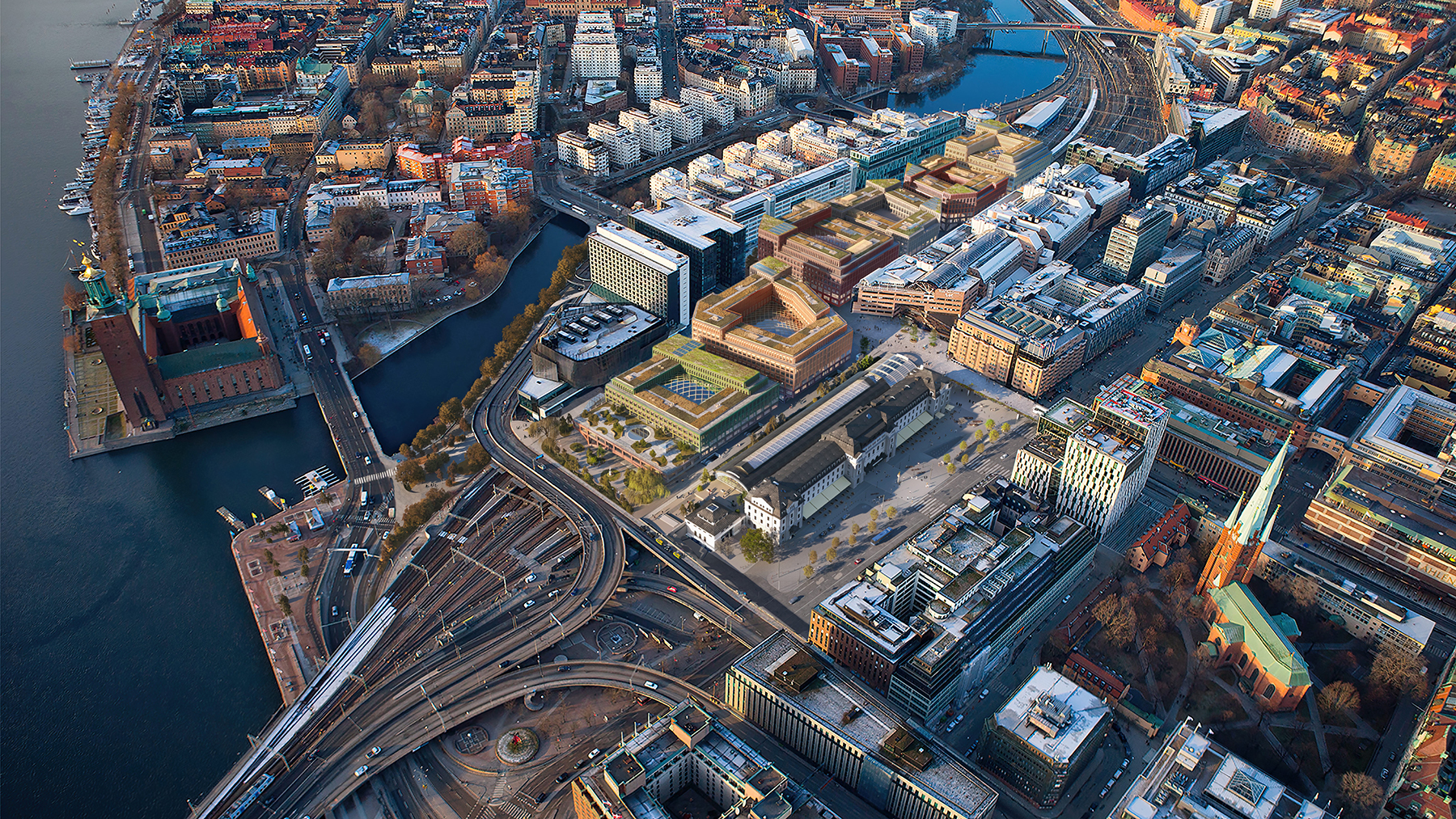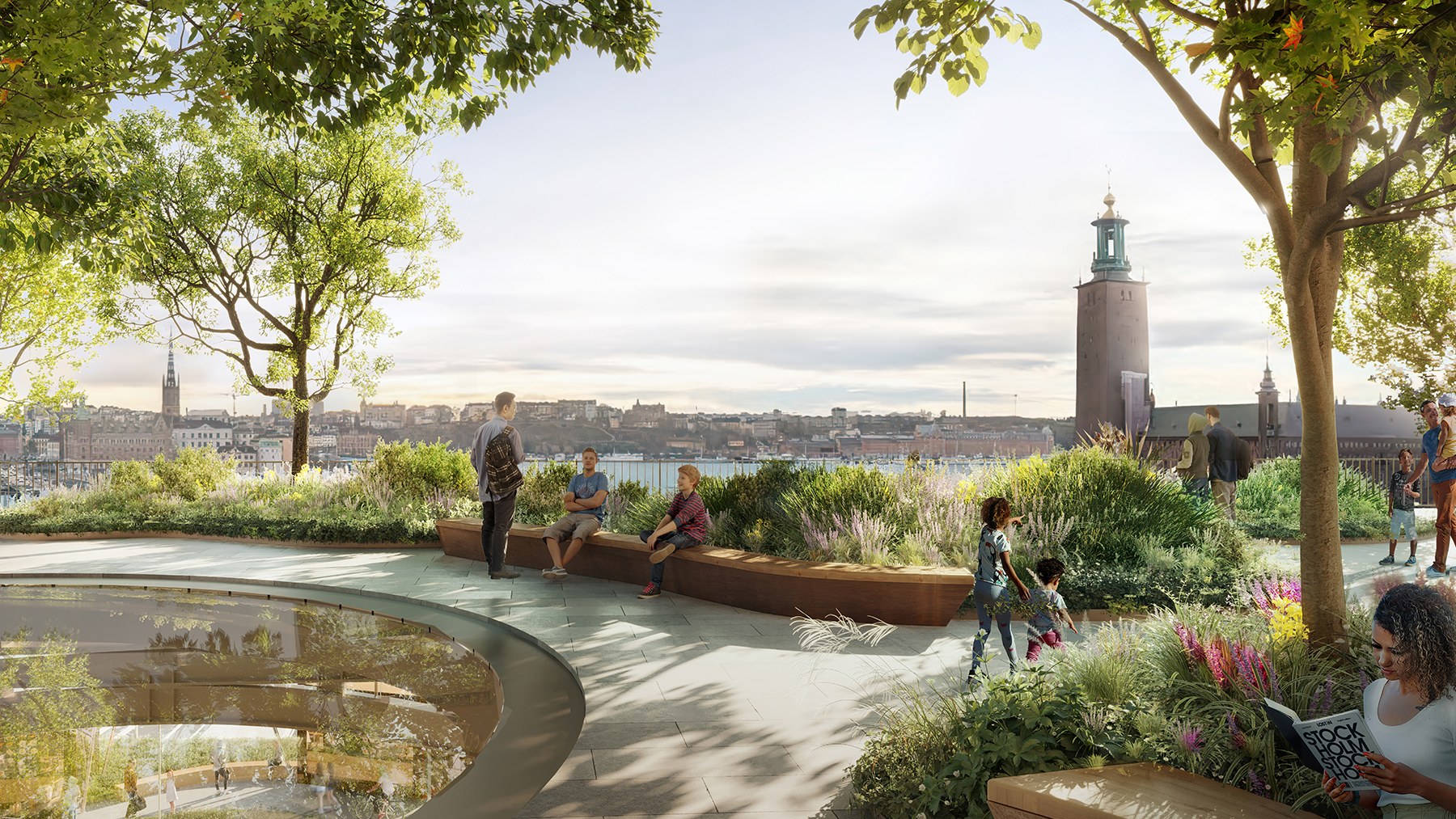By Jay Landers
Originally opened in 1871, Stockholm Central Station is the largest transportation hub in Sweden and is in the heart of downtown Stockholm. To keep pace with anticipated increases in rail travel, the station is to be reconfigured to accommodate more rail lines and improve intermodal connections. To take advantage of this opportunity, Jernhusen — a for-profit entity formed by the Swedish government to own and operate the train stations and other real estate associated with Sweden’s national railway — plans to conduct an ambitious effort to develop a major mixed-use district above the critical rail hub.

In essence, the project will create an entirely new area amid a dense urban setting in a prominent location in central Stockholm.
These plans took a significant step forward in mid-January with Jernhusen’s selection of a design team for the massive project, which has an estimated cost of $2.1 billion to $2.7 billion. On Jan. 18, Jernhusen announced its selection of the team, led by the architectural design and engineering firm Foster + Partners in collaboration with Stockholm-based Marge Arkitekter.
Other team members include LAND Arkitektur, Thornton Tomasetti, Ramboll, Wenanders, and TamGroup. The winning team prevailed over three other teams that had been selected by Jernhusen to participate in a parallel commission process.
The team’s winning proposal calls for the installation of a large deck over the existing rail station and rail yard tracks and the creation of significant new commercial and public space above. With this approach, the design seeks to unify an area of downtown Stockholm long bifurcated by the station and its associated rail lines.

Growing pains
Stockholm Central Station is the central hub of Sweden’s railway network and must expand its capacity to accommodate greater rail traffic in the future. Forecasts developed by the Swedish Transport Administration “show steep increases in train passengers in the foreseeable future,” according to the Jan. 18 news release from Jernhusen announcing the selection of the winning proposal. Unless action is taken, “Stockholm risks becoming a bottleneck for the entire country’s train traffic,” the release states.
In Sweden today, eight out of 10 train trips begin or end in Stockholm, said Daniel Markström, Jernhusen’s regional manager of project development for Stockholm in the Jan. 18 release. “By 2045, train travel is expected to have increased by more than 50%,” he said.
The Swedish Transport Administration intends to modify the tracks and platforms next to Stockholm Central Station to handle this anticipated increase in traffic.
Reconnecting the city center
In its current form, Stockholm Central Station and its open rail yard act as a “barrier in the city” to pedestrian and vehicular traffic alike, says Anna Ahlberg, the project manager for Ramboll. “It’s like a motorway through Stockholm,” Ahlberg says.
The areas of downtown Stockholm on either side of the station also have long been kept apart. To rectify this situation, the winning proposal aims to utilize the new deck over the tracks to reconnect these portions of the city and create the new commercial district directly above it.

“The new district, largely built over the existing tracks, will re-link the surrounding streets to create an active, friendly, and safe public realm that will stitch together the east and west sides of the city, improving passenger connections across Stockholm, without impacting the historic skyline,” according to a Jan. 18 news release from Foster + Partners. “The masterplan will create a brand-new public square, allowing the new station precinct to become a natural part of the urban fabric.”
Deck design
The deck represents one of the primary design challenges on the project, given its scale, location at the intersection of rail operations, and the commercial buildings above, says Nate Sosin, P.E., S.E., LEED AP, a vice president for Thornton Tomasetti, which is leading structural and protective design in collaboration with Ramboll and providing blast, facade, vibration, and sustainability services for the project.
“The deck will cover the majority of the project site, excluding existing roadways, or roughly 35,000 gross sq m,” Sosin says. “It will be supported by substructure at the track level, which will need to be coordinated with current and future track alignments, platforms, tunnels, and other infrastructure,” he says. “Key design drivers will be constructability, long spans, a low profile, and resilience and robustness appropriate for a transportation hub.”
At the same time, sustainability is a “fundamental goal” for the project, Sosin says. To this end, the design team spent considerable effort to reduce the embodied carbon associated with the deck. “Because of the many demands placed on the deck — supporting the public and retail spaces above, protecting them from trains below, maintaining a low profile — some of the initial systems proposed had a large amount of embodied carbon,” he says. “Our primary focus for the deck during the competition was to reduce its embodied carbon while maintaining or improving its performance.”
Fortunately for the project, Sweden is a leader in the development and production of low-carbon steel, Sosin says.
“While the team’s proposal for the deck has a similar amount of embodied carbon to a comparable concrete system in today’s terms, switching from concrete to steel opens the door to significant carbon reduction as Sweden’s fossil-free mills ramp up production,” Sosin notes. “Above the deck, our proposal called for a hybrid steel-timber superstructure for the commercial buildings, with timber floor panels replacing higher-carbon systems like steel and concrete.”
Improving connections
Another focus of the project is improving connections between the different modes of transportation operating in the vicinity of Stockholm Central Station. Currently, a tunnel connects the rail station with the main station for Stockholm’s bus system. The Arlanda Express, a rail link extending to Stockholm Arlanda Airport, located outside of the city limits, also connects to the rail station. The entrance hall of Stockholm Central Station will be expanded, improving the links between the station’s platforms, the bus system, and Arlanda Express trains.
A new tunnel to be constructed beneath a viaduct immediately north of Stockholm Central Station will “create a subterranean east-west link across the site,” according to the release from Foster + Partners. The tunnel will enable pedestrians to pass more easily between the station and an exterior street.
The team’s proposal “allows for the possibility of extending the tunnel to provide a below ground connection through to the Citybanan (Stockholm’s commuter rail line) in the future,” Foster + Partners says. “The tunnel will then connect the extended platforms of the Central Station, Arlanda Express, and the bus station in the city terminal, bringing together four modes of transport to create a single intermodal station.”
Key challenges
Phasing will pose a key challenge for the project, Sosin says. “The deck and buildings above will be built over several years and in several phases,” he notes. “Below the deck, there will be phased track realignment, tunnel construction, and expansion of the station itself. To be successful, our team’s design will need to accommodate each phase of this adjacent work while maintaining passenger flows and train traffic, in addition to being commercially viable.”
The need to work closely with multiple entities also presents a challenge to the design team, Ahlberg says. Besides Jernhusen, the team will need to work closely with the Swedish Transport Administration, which manages the railway, and the city of Stockholm, which owns the streets adjacent to the project. “Stakeholder management is also very complex,” Ahlberg says.
The project is scheduled for planning consultations in 2023.



